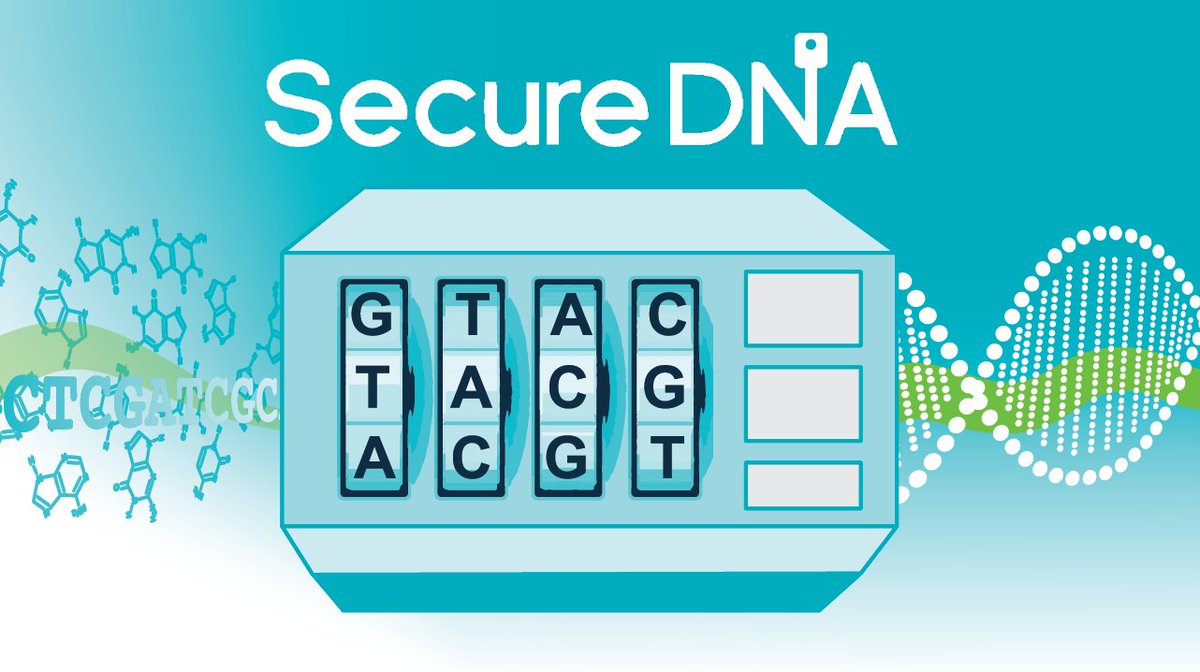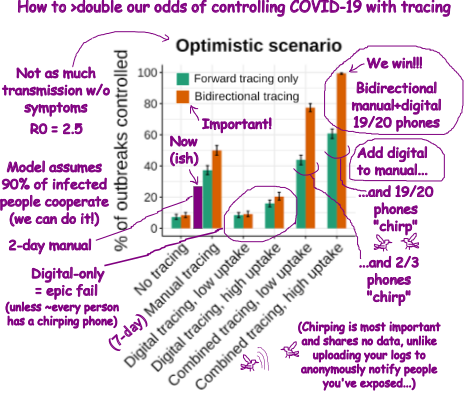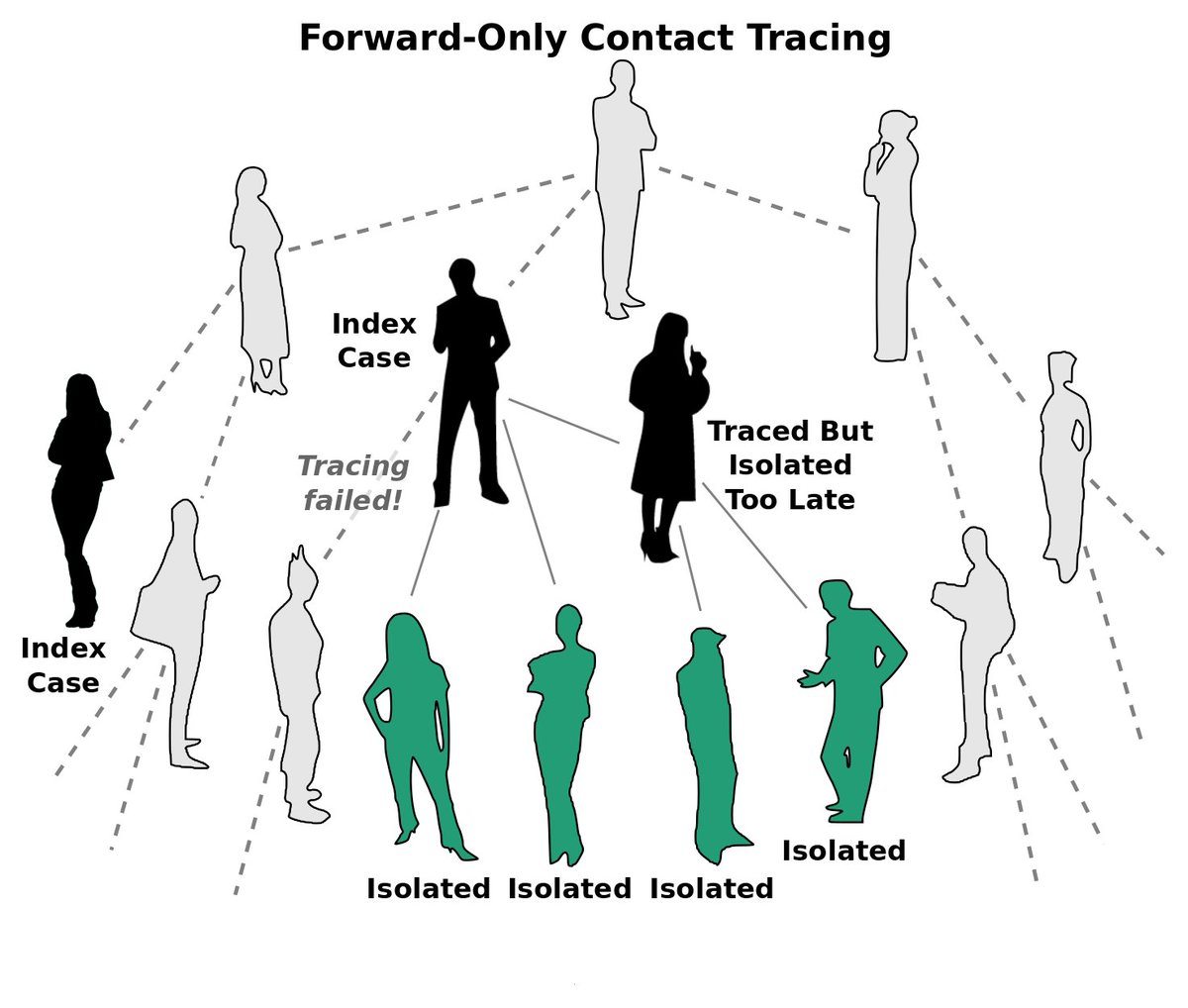
Early detection and pandemic monitoring systems will warn us of new threats and track spread, but containment will be up to public health. The American Pandemic Preparedness plan tries to ensure that it’ll be up to the challenge. 1/
https://twitter.com/kesvelt/status/1435974575196712964
If a pandemic is like a forest fire, pharmaceutical treatments are the chemical fire suppressants, while public health measures the prophylactic firebreaks, controlled burns, brush-clearing, etc that keep it from spreading 2/
Unlike a forest fire, medical countermeasures take time to develop (if possible at all), so prophylaxis is doubly important. Tiny brushfires are easily controlled, massive infernos not so much. Speed is crucial. 3/
Our immediate toolkit will include travel restrictions block wind-blown sparks, contact tracing to identify exposed areas at risk of lighting up, and quarantine to preemptively isolate them with firebreaks. 4/
Behavioral and environmental changes like avoiding crowds, PPE use, handwashing, and opening windows for better ventilation are like brush removal and prophylactic retardants: they make it harder for the fire to spread. 5/
Contact tracing requires diagnostics and struggles w/ short viral generation times, though bidirectional approaches can help (as we and @AdamJKucharski's lab showed). The others always work, but require public health. 6/
medrxiv.org/content/10.110…
medrxiv.org/content/10.110…
Nations with strong public health systems that invested in preparedness weren’t hit as hard as the US+UK. @TomBollyky & @StewartMPatrick at @CFR_org lay it out in detail. The new APP plan tries to fix it. 7/
cfr.org/report/pandemi…
cfr.org/report/pandemi…
III Strengthening Public Health Systems. Modernize health infrastructure at home and abroad to prevent, respond to, and contain biological threats. 8/
6. Strengthen Public Health: $6.5B. Recruit skilled folks into public health, build up lab capacity, reduce inequities, and support evidence-based public health communication. 9/
+ Sure would be great to have a not-starved American public health system
+ Teams of competent folk to head to crisis areas and help direct the response (quarantines?)
+ Digital infrastructure to share data so we’re not using fax machines 10/
+ Teams of competent folk to head to crisis areas and help direct the response (quarantines?)
+ Digital infrastructure to share data so we’re not using fax machines 10/
+ Focus on underserved areas, else they’ll be hit hard and spread it elsewhere
+ Evidence-based communication of why we need early travel restrictions, quarantine/isolation, PPE 11/
+ Evidence-based communication of why we need early travel restrictions, quarantine/isolation, PPE 11/
- Do we need “lab capacity” if we have early warning + abundant diagnostics?
(the best diagnostics are at-home and verifiable electronically)
- Public health labs are not necessarily the ones with the best sequencing expertise 12/
(the best diagnostics are at-home and verifiable electronically)
- Public health labs are not necessarily the ones with the best sequencing expertise 12/
Can’t argue with strengthening the U.S. public health system, but what will public health do if we have abundant at-home diagnostics and large sequencing cores are already running tons of clinical samples? 13/
I would hope some of these resources go to preparing for immediate travel restrictions, contracting with hotels to serve as immediate-conversion isolation facilities, running city-wide preparedness drills, etc. 14/
7. Global Health Security: $2.8B. Work with other nations to beef up their response systems and distribution networks, and support a metrics-driven fund to improve capacities for pandemic containment. 15/
+ Distribution of vaccines/therapeutics in less fortunate nations is the humanitarian thing to do
+ A metrics-based global preparedness fund might help a great deal if done well 16/
+ A metrics-based global preparedness fund might help a great deal if done well 16/
- Distributing vaccines/therapeutics abroad doesn’t prevent pandemics
- Funding int’l early detection, travel restrictions, PPE, diagnostics would be better
- How do you measure the capacity to stop a pandemic early? 17/
- Funding int’l early detection, travel restrictions, PPE, diagnostics would be better
- How do you measure the capacity to stop a pandemic early? 17/
Sending vaccines/therapeutics abroad would save many lives, but investing more in early detection systems and rapid diagnostic distribution abroad would save even more... and might block a pandemic from reaching the U.S. 18/
That’s it for public health in the APP plan. This is the area in which I have the least expertise, which is why I’ve been fairly quiet during the current pandemic. Comments/corrections are always welcome, but especially here. 19/
Tomorrow will cover PPEs/environment/stockpiles, then biosafety/biosecurity/catastrophic biorisks, and finally regulatory reform and coordination. Again, our window of opportunity is now: ask Congress to fund pandemic preparedness. 20/20
Now available: how better protective equipment and engineering buildings for ventilation and antimicrobial lighting could reliably block the spread of any future pandemic virus… and what the White House plan would support.

https://twitter.com/kesvelt/status/1437762723559792643

• • •
Missing some Tweet in this thread? You can try to
force a refresh









